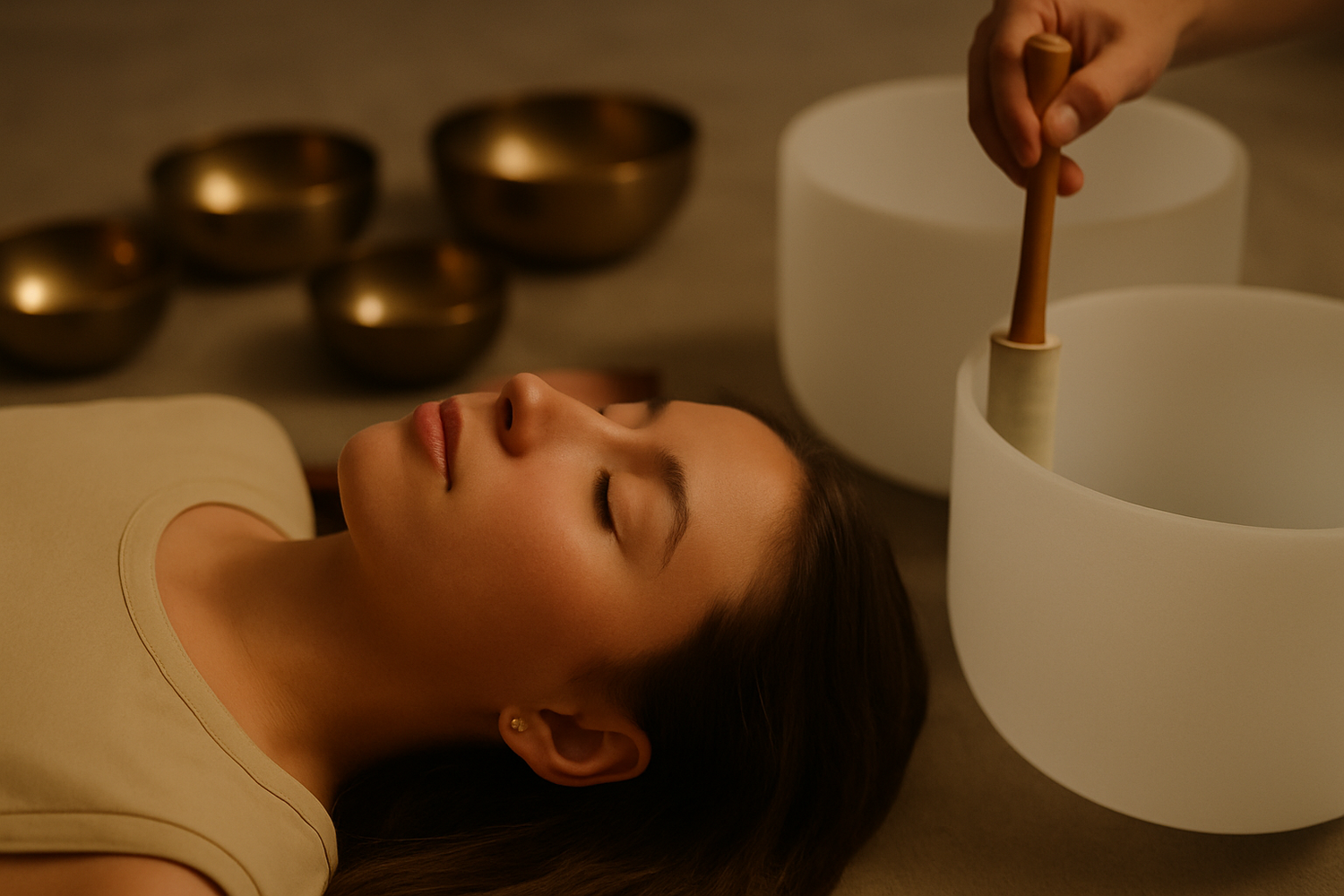Ever wondered why you feel so deeply relaxed after a sound bath? You're not alone. These immersive healing sessions go far beyond just soothing sounds—they create real shifts in your body and mind. From calming the nervous system to balancing energy centers, what happens to the body during a sound bath is both fascinating and transformative.
In this blog, we’ll dive into the physical, mental, and energetic effects of sound baths so you can truly understand how and why they work. Read on to discover what your body experiences during this powerful vibrational journey.
What happens to the body during a sound bath
A sound bath is more than just a relaxing experience—it's a deeply therapeutic journey that affects your body on multiple levels. Using instruments like crystal singing bowls, gongs, and tuning forks, sound baths work by immersing you in frequencies that stimulate healing responses in both body and mind.
One of the first things that happens during a sound bath is the activation of the parasympathetic nervous system. As the soothing vibrations wash over you, your body shifts from a fight-or-flight state into deep relaxation. This can lead to lowered heart rate, slower breathing, and reduced blood pressure, creating an ideal state for healing and restoration.
At the brain level, the sound frequencies begin to entrain your brainwaves, guiding them into alpha, theta, or even delta states. These brainwave states are associated with meditation, deep relaxation, and restorative sleep, helping to clear mental fog, ease anxiety, and promote emotional clarity.
According to Healthline, different brainwave states can significantly influence mood, focus, and relaxation. Additionally, research from PubMed Central highlights how sound-based therapies can support cognitive and emotional health by modulating brainwave activity.
On a cellular level, the vibrational energy of sound may help stimulate circulation and release tension stored in the muscles and tissues. Some people report feeling warmth, tingling sensations, or a sense of energetic movement in the body during the session.
Emotionally, sound baths can act like a gentle detox. As the frequencies move through the energy field, they can help release blocked emotions, balance the chakras, and promote a deep sense of inner peace. It's not uncommon for participants to feel lighter, more centered, or even tearful as stagnant emotional energy clears out.
In short, what happens to the body during a sound bath is a beautiful blend of physical relaxation, mental stillness, and energetic renewal. Whether you're seeking stress relief, emotional healing, or spiritual alignment, a sound bath offers a holistic experience that nurtures every layer of your being.
What does a sound bath do to your body?

A sound bath guides your body into a deep state of relaxation and healing using soothing vibrations from instruments like crystal singing bowls, gongs, and tuning forks. These frequencies activate the parasympathetic nervous system, which slows your heart rate, calms your breath, and reduces stress hormones.
Brainwaves begin to shift into meditative states—alpha, theta, or delta—bringing mental clarity and emotional calm. The vibrations also move through your body on a cellular level, helping to release muscle tension and improve energy flow. As a result, you may feel grounded, lighter, or emotionally released. Physically and energetically, a sound bath promotes balance, restores harmony, and creates space for healing.
Emotional and Energetic Shifts You May Experience

During a sound bath, you may experience emotional release as the vibrations help clear blocked energy and stored emotions. Feelings like sadness, joy, or calm may surface naturally, allowing for gentle healing.
Energetically, the sound frequencies help balance your chakras and restore harmony to your energy field. You might feel sensations like tingling, warmth, or energy moving through your body. These shifts often leave you feeling lighter, more centered, and emotionally refreshed. Over time, sound baths can promote emotional clarity, inner peace, and a deeper connection to yourself.
What Instruments Are Used
Sound baths use a variety of instruments, each offering unique vibrations that promote healing and relaxation. Crystal singing bowls are commonly used for their clear, resonant tones, often tuned to specific chakras to balance energy centers. Tibetan singing bowls produce grounding, harmonic sounds that calm the mind and body.
Gongs deliver deep, powerful waves of sound that can clear blockages and induce meditative states. Tuning forks offer precise vibrations that help align the body’s energy and stimulate healing responses. Other instruments like chimes, drums, rainsticks, and harps may also be included to create a rich, immersive soundscape.
Together, these instruments help shift brainwaves, release tension, and restore energetic balance. Each session is thoughtfully crafted to guide the listener into a deeply relaxed and receptive state, where healing on physical, emotional, and spiritual levels can naturally occur.
Is It Normal to Fall Asleep During a Sound Bath?

Yes, it’s completely normal to fall asleep during a sound bath. The calming vibrations and soothing frequencies help slow your brainwaves, guiding you into deep states of relaxation like theta or delta—similar to meditation or sleep. Falling asleep is a sign that your body feels safe and is entering a healing state.
Even if you're not fully awake, your body still absorbs the sound and benefits from the session. Many people report waking up feeling refreshed, lighter, and more balanced after a sound bath nap. It’s all part of the natural healing process.
Who Can Benefit from Sound Baths?

Sound baths can benefit anyone seeking relaxation, healing, or emotional balance. They are especially helpful for people dealing with stress, anxiety, insomnia, or burnout, as the soothing vibrations calm the nervous system and promote deep rest.
Individuals on a spiritual journey or those looking to balance their chakras and energy field also find sound baths deeply supportive. Whether you're new to meditation or an experienced healer, sound baths offer a gentle, non-invasive way to realign the body, mind, and spirit. They're safe for most people and suitable for all ages, making them a powerful tool for holistic well-being.
What Not To Do After A Sound Bath?
After a sound bath, avoid jumping back into stressful or overstimulating activities right away. Give your body and mind time to integrate the experience. Don’t consume caffeine, alcohol, or heavy meals immediately, as they can disrupt the calm state you've entered.
Avoid loud environments, intense exercise, or screen time for at least an hour if possible. Instead, drink water, rest, or journal to help process any emotions or insights. Respect the space you’ve created—sound baths work deeply, and integration is just as important as the session itself.
Conclusion
A sound bath is more than just a moment of peace—it’s a full-body experience that nurtures your physical, emotional, and energetic well-being. From understanding what happens to the body during a sound bath to exploring the emotional shifts, the instruments used, and the gentle aftercare it requires, we've uncovered how this ancient practice can support modern healing.
Whether you're seeking stress relief, chakra alignment, or deep rest, sound baths offer a safe, transformative space for all. Remember to listen to your body afterward and allow the healing to continue. If you haven’t tried a sound bath yet, this might be your perfect invitation to begin.





Leave a comment
This site is protected by hCaptcha and the hCaptcha Privacy Policy and Terms of Service apply.